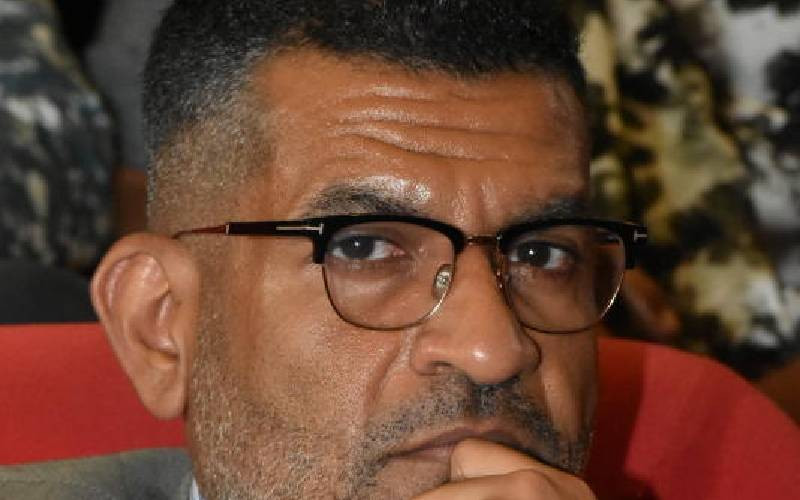
There is a phrase used sparingly in this year's election campaigns: 'The third liberation.' Yet one would imagine that after the struggles for the so-called 'second liberation' in the 1990s, the third decade of the 21st Century found Kenyans engaged in the third struggle for liberation.
Indeed, current campaigns suggest Kenyans are still struggling for full political, economic and socio-cultural freedoms. Thus, in a way, on August 9, Kenyans will be voting for another transition.
Naturally, all elections have been presented by politicians as a turning moment. Campaigners never tire of suggesting that elections present a new era. It is a time to sweep away poverty, eradicate illness, illiteracy, tribalism, corruption, underdevelopment etc. Politicians promise new schools, hospitals, roads, bridges, water, food in plenty; they undertake to put money in everyone's pocket, create jobs, make doing business easier, guarantee peace and security, and change the face of society.
The August 9 elections will also be about change. For on the ballot paper is a presidential combination of a man and woman who have spent most of their lives fighting for change. Raila Odinga and Martha Karua are probably the two most iconic figures in the struggle for political and socio-economic change. Of course there are many Kenyans who have sacrificed their resources, time and lives to fight for democracy, justice and growth. Indeed, millions of ordinary Kenyans contribute to these struggles in different ways every day.
But Raila and Karua epitomise the struggles for political and economic transformation. They have been on the left side of Kenyan politics for long. It is not by accident that their coalition picked the moniker, Azimio la Umoja. The intentions can only be collective. This is why the coalition is a pre-election covenant. It is a collection of all members of the Kenyan family, from across ethnic, religious, socio-economic, political, cultural, gender, generational, racial divides. It is a true representation of the dreams of all Kenyans.
The Raila and Karua Azimio team is what progressive Kenyans would ever have imagined. Progressive politics are about social justice. They are about defending democracy. Progressive politics seek to improve quality of lives of ordinary people. It seeks to fight corruption. It invests in redistributive policies. It is about the common man and woman.
If the Kenyan left - and one could be on the left without necessarily declaring publicly that they are leftists, communists or socialists - has always sought change or a revolution. Is this the moment to honestly talk about and act on historical land injustices and the pervasive landlessness? The Azimio coalition offers hope and realistic interventions that would make education free or affordable to all. Is this not the team that would realistically guarantee accessible and affordable healthcare to every Kenyan?
Who can a Kenyan leftist trust between the two major political formations? The left is not always necessarily an undying opposition to the right or the ruling elite. Its agenda can and is often copied by those in power, who in turn bastardise it for their own interests.
But the left always offers hope in a world where the market hovers over the heads of a majority of the population, looking for profits. The Kenyan left - whatever this may mean - has always provided a counter-narrative to the ruling elite's story. The leftist story is a tale of the suffering majority. Raila and Karua have been on the left for long. Will the Kenyan left stand with their comrades, this time?
The writer is contesting the Mombasa governorship on ODM ticket
 The Standard Group Plc is a
multi-media organization with investments in media platforms spanning newspaper
print operations, television, radio broadcasting, digital and online services. The
Standard Group is recognized as a leading multi-media house in Kenya with a key
influence in matters of national and international interest.
The Standard Group Plc is a
multi-media organization with investments in media platforms spanning newspaper
print operations, television, radio broadcasting, digital and online services. The
Standard Group is recognized as a leading multi-media house in Kenya with a key
influence in matters of national and international interest.
 The Standard Group Plc is a
multi-media organization with investments in media platforms spanning newspaper
print operations, television, radio broadcasting, digital and online services. The
Standard Group is recognized as a leading multi-media house in Kenya with a key
influence in matters of national and international interest.
The Standard Group Plc is a
multi-media organization with investments in media platforms spanning newspaper
print operations, television, radio broadcasting, digital and online services. The
Standard Group is recognized as a leading multi-media house in Kenya with a key
influence in matters of national and international interest.






